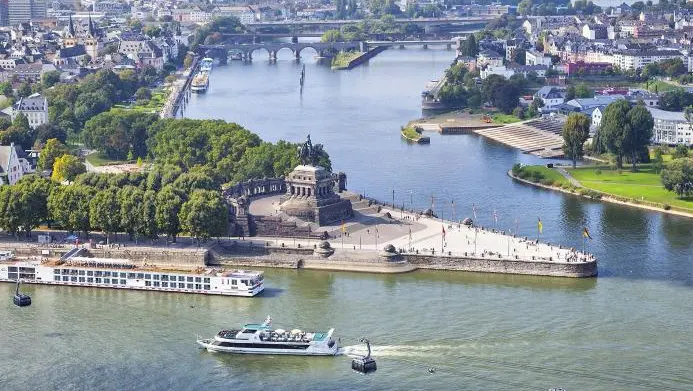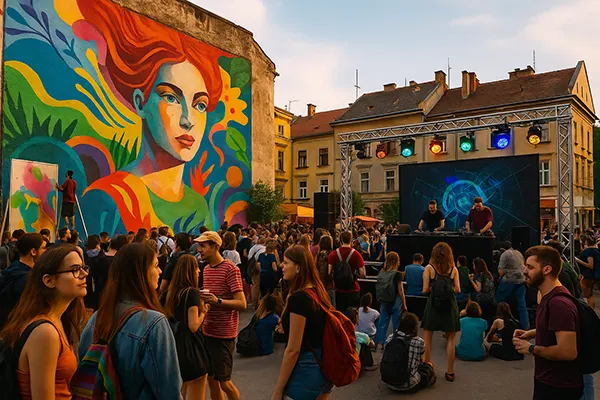
Cities on Water: 48 Hours in Cologne and a Rhine River Cruise
Cologne offers a compact blend of architectural heritage, contemporary culture, and scenic river landscapes, making it suitable for a weekend itinerary that combines city exploration with a river journey along one of Germany’s most recognisable waterways. Travellers who want a short city break often look for routes that allow them to see both historic districts and natural scenery without complex planning, and Cologne provides that balance. With efficient transport links, varied museums, and access to the Rhine Valley, the city works well as a base for a two-day programme that includes a full day on the river.
Cologne as a Weekend Base
Cologne is known for its cathedral, riverside promenade, and neighbourhoods that reflect different stages of the city’s development. For visitors with limited time, the central district is practical because many key landmarks sit within walking distance of one another. The area surrounding the cathedral is often the starting point due to its accessibility and the number of nearby transport connections.
The cathedral remains a central element of Cologne’s identity, and its role as a major landmark makes it one of the first locations many visitors prioritise. The surrounding streets lead toward the Old Town, where traditional buildings, narrow passages, and local shops provide a setting that contrasts with the larger modern structures in other parts of the city. Travellers who prefer quieter parts of town can move toward riverside walkways where viewpoints of the Rhine offer a clear perspective of Cologne’s skyline.
Public transport allows straightforward movement between districts, including the Belgian Quarter and Ehrenfeld, which offer cafés, small galleries, and shops. A well-organised weekend typically includes short visits to museums such as the Museum Ludwig and the Roman-Germanic Museum, both of which present collections that cover different historical periods. These institutions contribute to a deeper understanding of the city without requiring extensive time commitments.
Key Cultural Attractions
Several museums and cultural venues in Cologne help visitors form a comprehensive impression of the city in a short time. The Museum Ludwig is widely recognised for its collection of 20th-century art, and its exhibitions often include works by German and international artists. Those with an interest in archaeological findings can view Roman artefacts displayed at the Roman-Germanic Museum, which highlights Cologne’s connection to ancient settlements in the region.
Travellers who want an overview of local history can walk through the Old Town, where reconstructed buildings stand alongside preserved structures. The layout of the district reflects the city’s long development and helps visitors follow historical layers through its streets and public squares. The area is practical for those who prefer to see different periods of Cologne’s development without long travel distances.
The riverside promenade provides a different type of urban experience. Many travellers use it as a transition between sightseeing and relaxation before or after a museum visit. The promenade also leads to several departure points for Rhine cruises, making it convenient to combine cultural activities in the city with onward travel along the river.
Planning a One-Day Rhine Cruise
A Rhine cruise is considered one of the most efficient ways to reach the region’s castles and vineyard slopes within a single day. Services operating from Cologne vary in length, but routes toward the Middle Rhine Valley are especially popular because they pass locations associated with local legends and documented historical events. For visitors staying only two days, selecting a direct itinerary helps maximise time spent in the most scenic part of the river.
Most departure points are located near the city centre, which simplifies logistics for weekend travellers. Companies typically offer scheduled routes to towns such as Koblenz, Boppard, and St. Goar. These towns serve as gateways to well-known sections of the Rhine Valley, and onward travel by boat or local rail allows visitors to reach areas where castles appear at regular intervals along the hillsides.
The section surrounding the Lorelei Rock is one of the most recognised stretches of the river due to its sharp bend and steep cliffs. This part of the route is often photographed because of its contrast between the narrow valley and the hillside fortifications. Travellers usually plan a stop near St. Goar or St. Goarshausen, where walking paths and viewpoints offer an organised way to explore the surroundings within a limited timeframe.
Best Time to Travel and Practical Tips
April to October is generally considered the most suitable period for Rhine cruises because services operate more frequently, and weather conditions usually allow clear visibility of the riverbanks. During these months, many operators run multiple departures throughout the day, giving visitors flexibility when coordinating a round trip from Cologne.
Ticket prices vary according to the length of the route and the type of vessel. Travellers who want to cover longer distances toward the Middle Rhine Valley should expect higher prices, while shorter panoramic trips near Cologne provide a more economical option. Booking online in advance is usually advisable during weekends and public holidays, as these periods draw more passengers.
Accommodation in Cologne ranges from small guesthouses to larger hotels, and staying near the central station can simplify early-morning departures for river cruises. Those who prefer quieter locations can choose areas slightly outside the centre, where tram links offer quick access to the starting point. Planning meals ahead of time is also useful because some smaller towns on the river have limited dining options outside peak tourist months.

Combining City Exploration with a River Journey
Travellers often look for weekend destinations that balance historical interest with landscapes that feel distinct from typical urban settings. Cologne meets this expectation because its central districts offer museums and historic architecture, while the Rhine Valley introduces natural views and castle routes. Combining both elements in one trip reduces the need for lengthy planning while giving visitors access to different travel experiences.
Many weekend itineraries begin with a full day in Cologne followed by a second day devoted entirely to the Rhine. This structure allows visitors to understand the city’s cultural context before seeing how the region developed along the river over several centuries. The change of environment from urban streets to small riverside towns provides a clear contrast within a short timeframe.
Returning to Cologne after a day on the river ensures that travellers remain close to the city’s transport hubs, which is practical for early departures on the following morning. The itinerary is straightforward to adapt for different preferences, whether that means more time spent in museums, extended stops at castles, or a slower cruise schedule. Because of this flexibility, the combination of Cologne and the Rhine Valley works well for travellers who prefer an organised but not rigid weekend plan.
Budget and Accessibility
Costs for a two-day trip vary depending on accommodation choice, cruise distance, and seasonal demand. A typical weekend budget in 2025 includes accommodation from mid-range price levels in the city centre and standard cruise tickets for the Rhine route. Travellers who prefer to reduce expenses can select shorter boat journeys while still viewing prominent castle areas.
Rail connections along the Rhine Valley simplify movement between towns when cruise schedules do not align with a visitor’s preferred timetable. This flexibility is especially helpful for travellers who want to explore additional locations without committing to an extended river itinerary. Many small towns along the route have stations within walking distance of riverbanks, making transfers straightforward.
Cologne’s accessibility is another advantage, as the city is served by regular international and domestic train routes. Airports in the region also offer efficient links, allowing travellers from neighbouring countries to plan short weekend visits. This makes a combined city-and-river itinerary achievable for those with limited annual leave or tight scheduling requirements.





